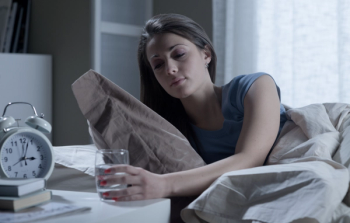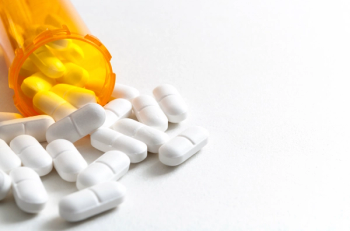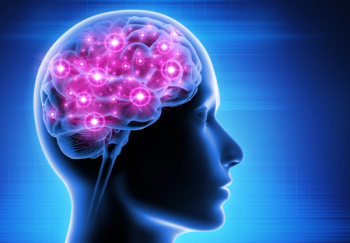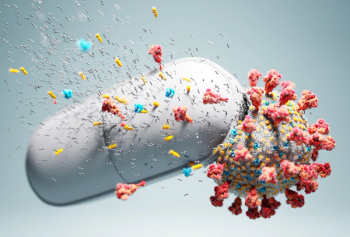
Beware the dark side of pharmacy life
Drug dependency is up among pharmacists, drugs abused, telltale signs and rehab programs.
COVER STORY
Beware the dark side of pharmacy life
One for you, two for me. Selfish, but harmless child's play, right? Wrong. It's one of many ruses used by pharmacists when they dispense drugs in order to satisfy their drug addiction.
While drug addiction among pharmacists is certainly not a new phenomenon, experts report that the number of pharmacists in treatment has increased. Why are R.Ph.s turning to drugs? Which drugs are they abusing? What are the telltale signs of addiction? What rehabilitation programs are available to help impaired pharmacists recover and return to work?
Dave Marley, Pharm.D., RAS (registered addiction specialist), executive director of the North Carolina Pharmacist Recovery Network Inc., Winston-Salem, said that the program has treated 135 pharmacists for addiction since 1995. "Our case load has consistently increasedfrom five in '95 to 25 in '98 to 30 a year since 2001," said Marley.
Tim Benedict, R.Ph., assistant executive director, Ohio State Board of Pharmacy, has seen a surge in the past 10 years in the number of R.Ph.s in Ohio who have drug addiction problems. "I spent the early '80s in the field and investigated six or seven pharmacists with addiction problems," he said. In 1986, when he became compliance and enforcement administrator for the board, he investigated a couple of cases a year.
"We now investigate 20 to 30 pharmacists a year in Ohio for drug addiction problems, and that doesn't include drug trafficking and doesn't count technicians," said Benedict. "We're doing at least as many cases with techs in the past few years as we are with pharmacists. Some of the technicians are addicted, but most are stealing for resale in the streets."
Merrill Norton, R.Ph., NCAC-II (Nationally Certified Addictions Counselor), CCS (Certified Clinical Supervisor), is director of the Recovering Pharmacists Program at the Talbott Recovery Campus, a private facility in Atlanta. "We have treated close to 1,000 pharmacists since 1974 when the program began," he said. "The numbers have increased drastically, and the demographics are changing. Now we're seeing younger males. That has to do with some early interventions by states with pharmacist recovery networks."
Norton pointed out that the average pharmacist the facility treats has severe problems and has been to treatment two or three times. "We see patients who have been to treatment several times and have not done well. Most pharmacists stay 16 to 17 weeks. Now 55% of those pharmacists on initial discharge will be put on some type of psychotropic medication for depression, anxiety, or personality disorder," he said.
Norton is concerned that there may be female R.Ph.s who need treatment for drug addiction. "About 55% of the pharmacy graduates are women. We're seeing only a small percentage of those women in treatment. I see 95% men and 5% women. I think there are more women out there in need of treatment," he said.
Norton explained that women who receive treatment at Talbott have more complicated personal issues to deal with than men, including childhood traumas and being involved in abusive relationships. They may also have a strong genetic history for depression, anxiety, or addiction.
Why is the number of pharmacists needing treatment on an upward trajectory? Increased stress in the workplace is largely to blame. "A lot of them are not happy with the profession because it never met their professional expectations," said Norton. "Many had expectations of becoming doctors and did not meet that goal. Even though pharmacy can be a wonderful career, most pharmacists end up doing work a tech can do." On top of all that, he said, the average pharmacist he sees works more than 60 hours a week.
The confines of the workplace also contribute to increased stress. "The average pharmacist works in an area that's about 12 ft. by 60 ft. They are locked in there; they can't eat; they can't use the restroom as necessarythey have to cheat their employer in order to take a break," said Norton.
Another culprit is the physical strain of the job, which requires R.Ph.s to be on their feet most of the day. Many pharmacists develop hip, back, and leg problems, and, because drugs are so accessible, they begin to self-medicate their pains.
Marley provided a scenario to illustrate how increased stress and the physical demands of the job lead R.Ph.s to self-medicate and eventually develop drug dependency: "Ten years ago, a pharmacist filled 100 Rxs a day. He has a bad back and can't get relief help. All day, he dispenses Vicodin and ibuprofen. He thinks, 'I'll take a couple of these to get through the day.' He does, and the back pain goes away.
"Move forward 10 years," Marley continued. "That R.Ph. is filling 500 Rxs a day, with the same bad back and even more stress. A couple of Vicodins help the back pain and the stress of phones ringing, the people giving you looks, and the manager complaining about your fill rates. Tomorrow, his back might not hurt, but he remembers the stress was less when he took the pills. In 13 years of doing this work, I never met a pharmacist who set out to be a drug addict. It's just one of those things that happen."
Yet another reason pharmacists succumb to addiction is many of them believe that because they are knowledgeable about drugs, they are immune from harm. "We hear this from everybody, 'I'm a pharmacist. I know how the drugs work. I can control them.' Garbage. They are the same as everybody else. They cannot control the drugs," insisted Benedict.
Acknowledging that genetics and predisposition to addiction are strong factors in determining whether a person will develop an addiction problem, Marley said each person has his own individual addiction threshold. "A lot of people use and abuse drugs, but they don't get into compulsive use because their genetic risk or environmental stress was low enough and use of drugs was small enough that they didn't cross that line," he said.
Pharmacy schools to blame?
Many pharmacists' addiction problems can be traced back to heavy partying in school. "Some started taking narcotics during internships," said Marley. "The schools know this is going on, but no one has ever gotten serious about addressing it."
Marley believes schools should enforce alcohol laws and keep parties out of dorms, fraternities, and sororities. "We need to remind the administration there aren't any stupid people in pharmacy school. If their grades are going into the toilet, the administration needs to look at what's going on," he said.
Which drugs are being abused?
Hydrocodone and derivatives such as oxycodone top the list of impaired pharmacists' favorites, according to Norton. He has also seen abuse of Valium, Xanax, and Ativan. "Hydrocodone is a class III. It is the one that is the most abused. It's available in 25 different forms on the shelf. It would be hard for someone to come in and do an audit. Generically, you have multiples, so it can be hidden. It's ordered a lot and used a lot," he said.
"When hydrocodone was introduced, it exploded. About 70% of pharmacists I treat are abusing hydrocodone," echoed Marley.
Norton is beginning to see OxyContin (oxycodone, Purdue Pharma) being abused by pharmacists. He explained that 18 to 24 months after a drug is introduced, he usually begins to see pharmacists abusing it. "I anticipate this year I will see more abuse of OxyContin. We've had some folks come in here using 1,600 to 1,800 mg of OxyContin a day," he revealed.
Benedict agreed that oxycodone and hydrocodone are among the most commonly diverted drugs. Diazepam, alprazolam, and phentermine are also on his list. Emphasizing that addicts are looking for drugs that provide quick onset, a good high, and quick elimination from their body, he noted, "Diazepam doesn't fit that description, yet it's been abused for so long. They usually start out with the opiates and the benzodiazepines, but they move on to other things."
The average R.Ph. Benedict investigates is taking 30 pills a day and may be abusing one or more products. "That's more than 7,000 doses diverted in one year," he said. "The average pharmacist we see has been diverting drugs for two to 14 years. Many of them go for a long time just abusing the drugs, not becoming addictedthen something happens in their life, and they go crazy."
Do pharmacists realize how many pills they are abusing? "I've never seen one person in 22 years accurately estimate how much they are taking. They will downplay the quantity, and it's usually about a third of what they are taking," Benedict said.
Where can R.Ph.s go for help?
Pharmacists are not the only ones who have difficulty acknowledging they have a drug addiction problem. The industry was oblivious to the situation until the early '80s.
Ronald Williams, former leader of the pharmacy section of the University of Utah School on Alcoholism and Other Drug Dependencies and head of the American Pharmaceutical Association's pharmacy recovery network, said that in the early '80s there was no widespread recognition that there was an addiction problem in pharmacy. "Back then, if a pharmacist had a problem and the board found out, he lost his license and that was the end of it. There were no facilities and no recognition of the recovery process," he said.
The pharmacy section of The University of Utah School on Alcoholism and Other Drug Dependencies has been instrumental in improving recognition of the problem as well as helping impaired R.Ph.s. Known as The Utah School, the program is held for a week every June. Attendance has grown from 20 at its inception to 250. Attendees include students, educators, and impaired pharmacists.
The Utah School began as a program for impaired pharmacists that was run by a group of students in Minnesota. Formerly called the Student American Pharmaceutical Association, it is now known as the APhA Academy of Students of Pharmacy. The group was able to influence APhA's house of delegates to pass a policy recognizing that there is an impairment problem in pharmacy and that there should be programs developed at the state level to help people with this problem.
"When the University of Utah saw APhA had adopted a policy, it asked if we wanted to sponsor the pharmacy section at the school," said Williams, who was involved with the Utah School from 1982 until 1998, when he retired. "It was a blessing. Suddenly we had a tool with which to implement this policy that had been adopted." The policy said there should be programs at the state level to identify impaired pharmacists and get them into treatment and back into practice. It also worked with state boards so they would no longer take a punitive approach, but rather recognize rehab and allow pharmacists who go into treatment back into practice at some point.
"The school has absolutely helped so many people, especially early on," continued Williams. People came and asked how they could establish a program in their states. While the number of state pharmacist recovery network programs has grown, treatment experts agree that the key to a successful program hinges on obtaining funding for full-time personnel and a full-time recovery program.
The problem is the majority of state programs operate on a strictly voluntary basis, said Marley. "They get no funding support from the pharmacy board. We've made leaps and bounds educating the profession about the problem." In 1982, he said, they had difficulty convincing people that there even was a problem in the profession. "Now the profession knows there's a problem, but we've not had enough success getting states at the regulatory level to take the next steps and create and fund these programs."
In 1995, when the North Carolina Pharmacist Recovery Network was still a volunteer program, it took six cases. From 1996 to 1997, it handled eight cases. In 1998, the first year it became a full-time funded program, the number of cases increased to 28. "That was a significant jump. We were able to make people aware the program was there and there was a staff person dedicated to running it," said Marley. How did the program get funded? Half of the program's budget comes from license fees, he said, while the other half comes from treatment fees it charges. Out of each license fee, $10 goes to partially fund this program.
The benefits of a fully funded program are evident in the way in which the North Carolina Pharmacist Recovery Network operates. Pharmacists come to the program in three ways. The smallest number of R.Ph.s (25%-30%) who come for treatment are those who were caught by their state pharmacy board or law enforcement. The program assists them through a disciplinary process and provides treatment. The client signs a five-year monitoring contract. The board takes the impaired pharmacists' licenses until the program says they're ready to return to work. "We petition for a hearing and generally get the license reinstated," said Marley.
The most referrals (60% to 65%) come from friends, co-workers, or family members. These pharmacists are not reported to the board as long as they do everything required by the program. This includes an initial assessment, referral to treatment, and a five-year monitoring program that includes drug tests. They must also stay clean for five years. "The board of pharmacy will never know who they are other than by an anonymous case number," explained Marley.
The program offers a way for friends and family to help their loved ones without getting them in trouble. "If they don't do what we tell them, then we tell the board. But many times, they can just come in, do what they're supposed to, and they do very well," said Marley.
Only 15% of the program's referrals are pharmacists who admit they have a problem. "Most people who come in are in profound denial," Marley said. "They are only there because I told them if they didn't get here within 48 hours, I'd call the board. Most come in and have a story to spin. Through training in this field, you learn how to work through that, and we also have a drug test."
The program's philosophy revolves around the 12 steps of Alcoholics Anonymous and Narcotics Anonymous. And although participants are monitored for five years only, it is expected that pharmacists' commitment to the 12-step model will be for life.
"They learn how to deal with life on life's terms, without using drugs," said Marley. "Most of our guys succeed and go back to practice. Of the 135 we've treated, 81% have stayed clean with one treatment experience and had no relapses. Of the remaining 19%, 15% were retreated a second time and went on to do just fine. Only 5% to 6% have difficulty and don't make it back to practice successfully."
Pointing out that with other societal-based drug treatment programs the success rates are generally one in 10, Marley said, "Our success rate is 80% because we do have the leverage to tell them we will notify the board of pharmacy and they'll lose their license."
The Georgia PharmASSIST program is one recovery program that is trying to become funded. In order to accomplish this goal, the Georgia Pharmacy Association and Georgia Pharmacy Foundation created the Southeastern Pharmacy Recovery Network Conference. The conference, held every year in the fall for the past six years, receives grants from pharmaceutical companies through the Georgia Pharmacy Foundation. Profits from attendance fees are used to get the program funded.
The Talbott Recovery Campus, mentioned above, is a private facility that also uses the 12-step program. Treatment consists of family and individual therapy. "Our primary roles here are as family therapists," said Norton. "You can't get the individual better without getting the family better. We have at least two weeks of family programs here."
Pharmacists also participate in physical exercise and a spiritual program. Norton said that the Talbott program has had an 85% success rate, although he said he "rarely" has heard a pharmacist voluntarily check himself in. "A wheel has to fall off, and it's usually a legal wheel," he said.
Benedict had more positive news, "Over the past decade, 80% of the R.Ph.s who went into treatment in Ohio have returned to practice without further problems."
While the issue of drug-addicted pharmacists is being addressed and recovery programs are growing, the problem isn't going to go away by itself. More recovery programs in more states are needed.
As Nan Davis, R.Ph., cofounder of International Pharmacists Anonymous, put it, "I get calls from all parts of the country. It's heartbreaking that they're out there on their own. We need more state programs that really advocate for pharmacists instead of just throwing them to the wolves."
Sandra Levy
Telltale signs of drug abuse
Changes in physical appearance, including weight loss and poor physical hygiene
Sweatiness, irritability, forgetfulness, tardiness
Mood swings throughout the day
Bathroom breaks, after which mood is elevated
Ocular changes (e.g., pinpoint-size pupils); shakiness; tremors; and, in some cases, seizures caused by drug withdrawals; speech problems (e.g., slurred speech, inability to concentrate or carry on a conversation)
Avoidance of counseling patients because of inability to offer explanations
Frequent absences without any notice
Willingness to work extra shifts, weekends, and holidays and showing up on days off to seek an opportunity to steal drugs; returning after the pharmacy closes for a wallet or house keys that were intentionally left behind in case of questioning
Giving up lunchtime so that others in the pharmacy can lunch together, leaving the abuser alone to take drugs
Patient complaints about being shorted quantity of drug dispensed; increasing complaints from patients or co-workers as to a person's attitude
Always volunteering to check-in orders or check controlled substances
Adjusting perpetual inventories to reflect lost Rxs and thus cover up for stolen drugs
Ordering items that are not needed
Where R.Ph.s can go for help
University of Utah School on Alcoholism and Other Drug Dependencies Pharmacy Section: Sponsored by the American Pharmaceutical Association and the APhA Academy of Students of Pharmacy (APhA-ASP). For information contact Susan Langston at
APhA Addiction Practitioner Interest Group: Has as its mission to foster greater awareness and understanding of addictive disease as a public health issue and to promote treatment and recovery from addictive illnesses through education, advocacy, and peer support. For more information, visit
International Pharmacists Anonymous: Founded in 1987, IPA has 1,060 members. Services include a confidential e-mail list, e-mail updates, and a newsletter that is published three times a year. The organization holds meetings at APhA meetings, hospital pharmacy meetings, and at the Southwest Pharmacist Recovery Network meeting, which is held every fall. This year it will be held in Tucson from Sept. 13 to 15. IPA will also meet at the Heartland PRN in Nebraska, from Oct. 4 to 6, and at the Southeast PRN in Atlanta, Nov. 8 to 10. For more information, contact Mary Jo Cerny at
Pharmacy Recovery Network state contact roster*
David Jones
Phone: (417) 886-4111
E-mail:
Phone: (573) HOT-4MPA
Nebraska
Sandra Levy. Beware the dark side of pharmacy life. Drug Topics 2002;13:33.
Newsletter
Pharmacy practice is always changing. Stay ahead of the curve with the Drug Topics newsletter and get the latest drug information, industry trends, and patient care tips.























































































































